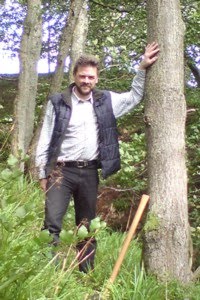Most environments have dangerous things in them, but humans have proved quite efficient at eliminating the larger and more obvious hazards, such as other humans and larger animals. Until modern times, the persistent little beasties, like insects, have proved harder to stamp out. Some insects, together with some fungi, view the fabric of our material culture as a food source.
Builders in many parts of the world use plant stems, particularly trees, but also grasses and reeds, because they are relatively light and strong, tend to grow long and straight, and are often abundant. These plants have a structure built from a compound called cellulose. In wood this accounts for about 50% of the structure, the rest being hemicellulose and lignin. Cellulose and hemicellulose are polymers, chemicals formed by long chains of smaller base units. Cellulose is made from chains of glucose in much the same way that the plastic PVC (polyvinyl chloride) is made from chains of vinyl chloride molecules.
Builders in many parts of the world use plant stems, particularly trees, but also grasses and reeds, because they are relatively light and strong, tend to grow long and straight, and are often abundant. These plants have a structure built from a compound called cellulose. In wood this accounts for about 50% of the structure, the rest being hemicellulose and lignin. Cellulose and hemicellulose are polymers, chemicals formed by long chains of smaller base units. Cellulose is made from chains of glucose in much the same way that the plastic PVC (polyvinyl chloride) is made from chains of vinyl chloride molecules.
Cellulose is tough stuff, which is why we find wood so useful, and luckily it is also tough stuff to eat. For humans it would be pure dietary fibre, but we lack the appropriate bacteria in our gut to break it down. These are found in ruminants, like cows, and in certain insects, and it is the latter that are most likely to try and eat your house.



















